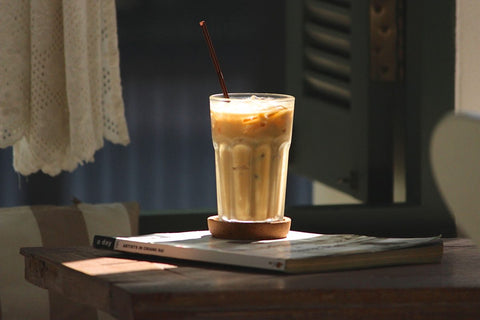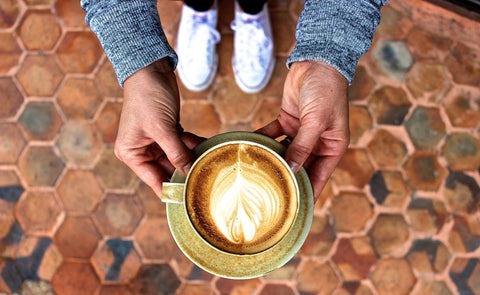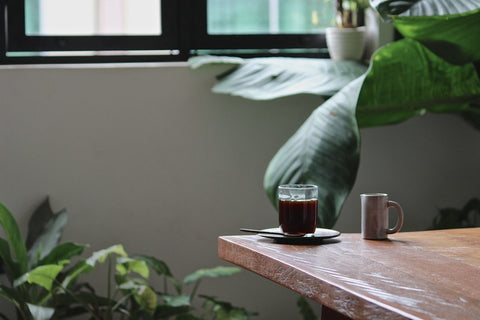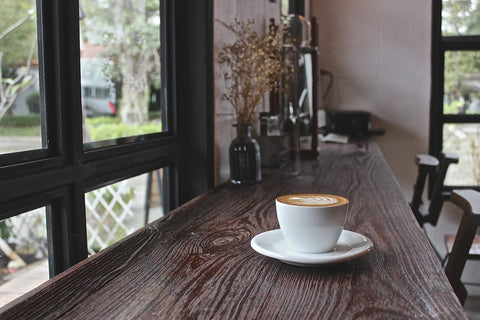Have you ever tasted blueberries, sugar cane, or candied pecans in your coffee? No, this isn’t a joke. We’d love to show you how.
Coffee is more complex and flavorful that we often consider it to be. To date, flavor scientists have identified over 1,500 aroma and flavor compounds in coffee. Compare that to the 200+ in wine and you can see why coffee tasting is a very serious activity for some.
But we’re not aiming to make you a coffee tasting snob. Our goal is to give you the knowledge and tools you need to enjoy your coffee to the fullest, which includes being able to taste it on a more intimate level.
It may not be easy at first, but being able to perceive the nuance flavors of great coffee makes the journey worthwhile.

Awakening Your Senses
We don’t grow up learning to taste food and beverages with a critical eye. Sure, we eventually pick up on the differences between cheddar and mozzarella or whole and skim milk. But mostly, we learn to stick to big, oversimplified categories. Like coffee.
Freshly roasted and ground coffee from a high quality coffee roaster can taste fruity, spicy, sweet, nutty, floral, and beyond. The realm of flavor reaches far and wide.
We taste by comparison. Whole milk is thick and rich compared to skim milk. Dark chocolate is bitter compared to milk chocolate. Some crackers have a garlic flavor, but others are cheesy. This is how we perceive the world around us – especially taste.
To awaken your senses and find these flavors yourself, you’re going to have to ask yourself a very important question: What does this remind me of?
You may have to ask yourself this question just a few times before you begin to get a sense for nuance flavor in you coffee. You may ask the question for weeks. Our taste buds are all different, so don’t be alarmed or frustrated if you don’t feel like you’re making progress.
Fake it till you make it. In this scenario, it will actually work. By shooting out random flavors and experiences, you’re still teaching your mind to look for the subtle notes. If you silence your skeptical mind and don’t try, your senses will remain asleep.
This journey is about becoming deeply aware of the things around you, so there’s no need to feel stressed or pressured to taste like a professional. Stay loose and don’t take yourself too seriously.
Let’s dive into the actual coffee itself. This is where it gets really fun.

How To Taste Coffee
There are a few different flavor elements that make up the overall experience of a coffee. Let’s break these down so you can learn to taste and describe them.
Acidity
When in balance with the other elements, acids bring life to the coffee. You can describe them by their intensity (crisp, mellow) or by an accompanying flavor (sour green apple, bright lemon).
Sweetness
Some coffees have a rich sweetness, some have a mellow sweetness, and some have no sweetness at all. Sometimes the sweetness can remind you of a particular type of sugar, such as cane sugar, caramel, honey.
Aroma
With over 850 aromatic compounds in coffee, this one can get pretty wild. Some aromas are in-your-face and some are gentle. All aromas have some sort of accompanying flavor, which could be anything from Earthy to strawberry to rose.

Body
This is how your coffee feels. Does it feel thick and heavy in your mouth, or is it more light and thin? Does it feel chalky or rough, or is it more smooth and silky? Body can also be referred to as “mouthfeel”.
Aftertaste
This is the final moment of the flavor experience. As you swallow the coffee, what sticks out to you? Was it a smooth, sweet finish? Was it harsh and bitter? Does that final flavor linger or did it go away immediately?
Extraction
Under extracted coffee didn’t pull enough out of the grounds, resulting in sour, thin, or salty coffee. Over extracted coffee pulled too much from the grounds, producing a harsh bitterness that overshadows the other tasting elements. If you can taste all the other elements clearly, you can describe the extraction as balanced.

Real World Tasting
You take a sip of your coffee from Panama and savor it. You take a deep breath and ask yourself the magic question: what does this remind me of?
You notice it has a crisp acidity that pleasantly nips at the sides of your tongue and a subtle sweetness that briefly sits on your tongue’s tip. As you breath in, a smooth floral aroma becomes apparent. The coffee liquid feels light across your tongue.
You swallow and get another whiff of that floral aroma that lingers for a few seconds, then fades away without a hint of bitterness. Overall, you decide the extraction was balanced and that this is a great coffee.
You can do that. Start by keeping it simple. Take these elements one at a time, refer to the Coffee Taster’s Flavor Wheel if you need some help, and always ask yourself the magic question: What does this remind me of?

The journey of learning to taste coffee is a rewarding one. You’ll not only learn about how complex and fascinating coffee can be, but you’ll open your taste buds to experiencing other foods and beverages in intimate ways as well. In this way, this is a journey that will reveal rewards for decades to come.
